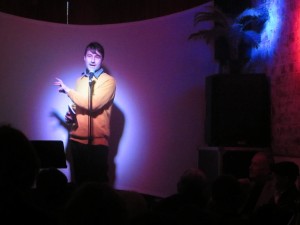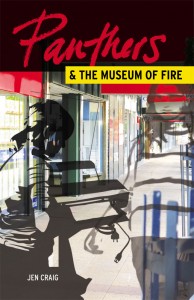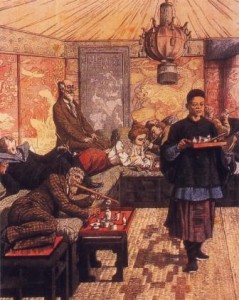
Several authors came to mind as I read Jen Craig’s novella. People like WG Sebald whose Rings of Saturn takes you on a similarly apparently meandering journey but where cultural references continually play a part. Or Proust, for whom memory, and the unfolding of memory, is so important. Or Joyce, for whom a single moment or hour or day can telescope into an extraordinary volume of some length.
I have a very strong memory, from when I first came to Sydney, of taking the same journey, almost daily, as the protagonist in this book (who is mysteriously also called ‘Jen Craig’). Because I landed in Glebe, I’d walk along that same route along Glebe Point Road, taking in the specific signposts of cafes, of people. I’d hang a left onto Broadway, Parramatta Road, taking in the burnt out St Barnaby’s church and the old furniture stores and eventually coming to a fork in the path which, for me, would be going to Ultimo, to the ABC where I work and for the protagonist of the book, heading under the tunnel towards Surry Hills.
The book very much looks at the psycho-geography of the surrounds of Sydney and it reminds me of the City of Sydney commissioned work ‘City of Forking Paths’ created by the artist Janet Cardiff which takes you on an interactive journey through Sydney streets using an iPod. This journey is through The Rocks and, like in Panthers and the Museum of Fire, the artist speaks to you of her experiences. And in both works, you are perpetually wondering whether it is the author’s actual lived experience, or is it completely fictional? Are the events happening now or in the past? And your understanding of what is real and what is fiction perpetually shifts.
Janet Cardiff is a sound artist and the way I absorbed this novella was mainly through sound – the journey taken here is almost a rhythmic one. It’s been described as a stream of consciousness and to me that stream is about a certain propulsion through time which would come through sound. It is like two steps forward, three steps back. Two steps forward, three steps back. In a spiralling fashion and that spiral takes not only the growth of the spaces the narrator is inhabiting but also the memories that keep churning through the book and that add to the labyrinthine understanding of the characters.

Jen Craig, a friend of mine for over a decade, lives in a classic terrace in the inner west of Sydney. These terrace houses are narrow, somewhat linear but also completely non-linear. You can imagine the design coming from the opiate-fuelled mind of a Victorian architect – the rooms often have very little relationship to reality. But if you live in a terrace with more than one person, you have to engage in this constant, negotiated choreography of your intentions, your desires, your memories, what you want to do. It all gets very tangled. Your journey through that house becomes this perpetual dance. And, so too, with this book. The journey through the streets reminded me of wandering through Jen’s home – that the characters here, the kind of breaking apart of various connections, is maybe a way of understanding the narrative. Like in her first book, Since the Accident, there is in this book the breaking apart of familial structures which unravel and re-tangle over time.
I urge you to buy the book. If you type the title, ‘Panthers and the Museum of Fire’ into Google the first couple of pages are filled with rave reviews about it. So it is going to go on to have its own great life which I’m really excited about.
Edited extract from Julian Day’s launch of Panthers and the Museum of Fire, Knox St Bar, August 8, 2015
Follow Us:
Share this page:
